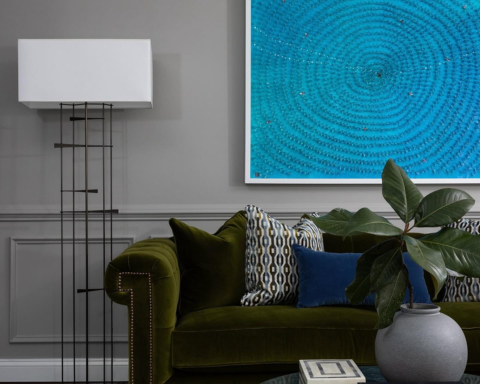Free Ground Shipping on Orders Over $49 Details & Exclusions Excludes Curb Side Delivery (LTL). Lower 48 United States Only. • Shop The Memorial Day Sale Catalog!
Lighting styles draw their influences from countless time periods and cultures. Some, however, stand out for their ageless ability to merge diverse inspirations into a distinct family. Traditional lighting is such a style, and to many of its passionate fans, it’s the only option when it comes to furnishing homes and work spaces.
What makes lighting traditional as opposed to transitional or contemporary? It’s not always easy to understand the distinction, especially if you’re unfamiliar with the subject. Here are some key characteristics that might offer illuminating insights.
Traditional Ceiling Lights
As with other lighting styles, one of the simplest ways to begin defining the traditional aesthetic is to examine chandeliers and ceiling lighting. These larger-than-life examples illustrate many of the iconic features that make the genre what it is.
To begin with, the traditional design styles developed in the mid-1700s originally represented a rejection of Baroque, Rococo and similarly ornate European architecture. The first traditional ceiling lights were most likely neoclassical revivals of Ancient Greek and Roman aesthetics. Of course, architects of the day had distinct advantages over their ancient predecessors, like being able to use candles and gaslight instead of torches or braziers. The earliest traditional lights were markedly compact and way easier on the eyes than the flourishes of their Baroque counterparts.
What did designers do with their millennia-old inspirations? They created chandeliers and traditional pendant lighting that made full use of the pure geometries they aspired to. Sweeping curves of wrought iron and steel, glass enclosures edged by beveled brass and regular arrays of crystal pendants were the order of the day.
Today, you can still observe these ideas replicated in patina-ed ironwork, unpretentious bowl-shaped pendants and smooth candelabras. Traditional ceiling lighting spans a broad range of design sensibilities, but most installations share an elegant feel that adds class to their surroundings.
Traditional Wall Light Styles
Of course, traditional pendant lighting wasn’t the only form of illumination to ride the wave of change. Whereas ornate forms held out in some other areas of design, traditional light fixtures quickly came to dominate walls and outdoor installations.
The traditional lighting fixtures you might encounter on an indoor or outdoor wall are utilitarian in form, yet they’re not without a certain unique charm. Typical examples feature one or two simple curved arms, minimalistic iron work or short bursts of textured brass. Evoking a yearning for the days when quiet candlelight cast its soft rays, many include small dishes beneath their light sources.
Traditional exterior lighting is much the same with the exception of its rugged construction. While it maintains the visual theme, for instance, it tends to favor downward-facing glass shades and iconic streetlamp enclosures.
Not all traditional lighting fixtures designed for walls are fixed. Swing lamps and movable arms offer a bit of flexibility without compromising the look.
One perfect example of the style is traditional bathroom lighting. Because bathrooms lack room for massively opulent alternatives, a single traditional light is often the perfect complement to the clean lines and unadorned surfaces people prefer in limited spaces. Traditional bathroom lighting makes numerous appearances in the lavatories of businesses that seek to cultivate an orthodox aesthetic.
Traditional-Styled Lamps
Interestingly, traditional lamps reveal a broader range of aesthetic influences than most forms of traditional lighting do. Of course, the traditional architectural style was developed over the course of centuries, so it may not be too surprising that artistic liberties are common.
Perhaps freed of the physical constraints of traditional exterior lighting and traditional track lighting, traditional lamp designers are a bit more flexible with form, shape and material. Porcelain and etched glass appear alongside the brass and iron you’d expect to see, and shapes range from the standard candle holder all the way to robust urns and lithe columns. Because these lights still respect the fashion’s overwhelming opposition to the garish, however, they mesh extremely well with understated traditional pendant lighting, chandeliers and wall fixtures.
So is traditional lighting right for your home or office? Just remember that you don’t need to be lighting traditional spaces to enjoy going back to the origins of many contemporary design philosophies. Traditional light fixtures are just varied enough to offer something for any preference, yet they never exceed the bounds of refined taste.
PRO TIP: When combining unique lamps with other traditional light fixtures, choose similar finish materials to make the job easier.







